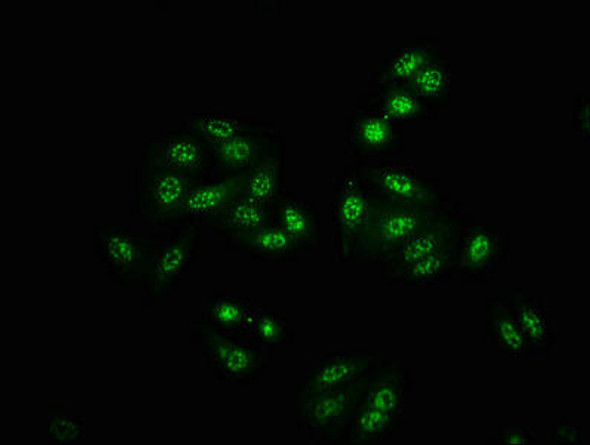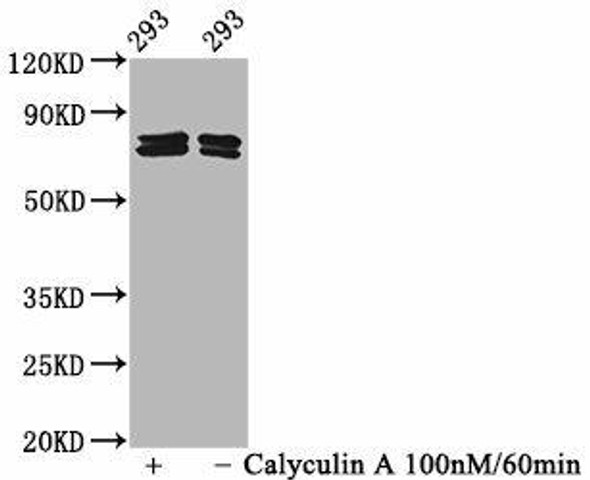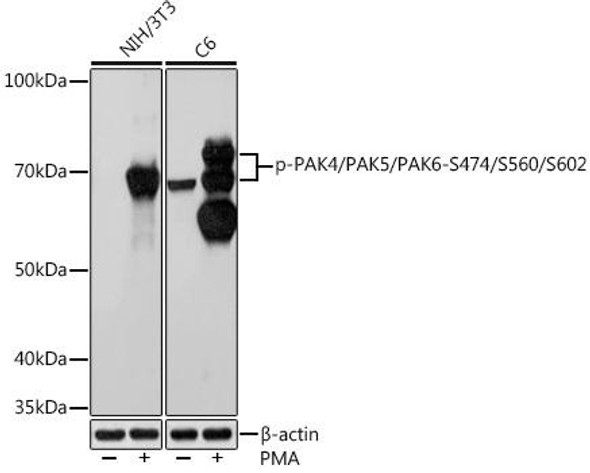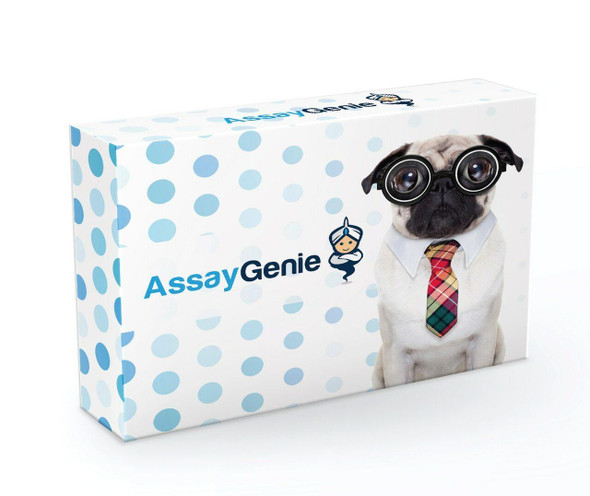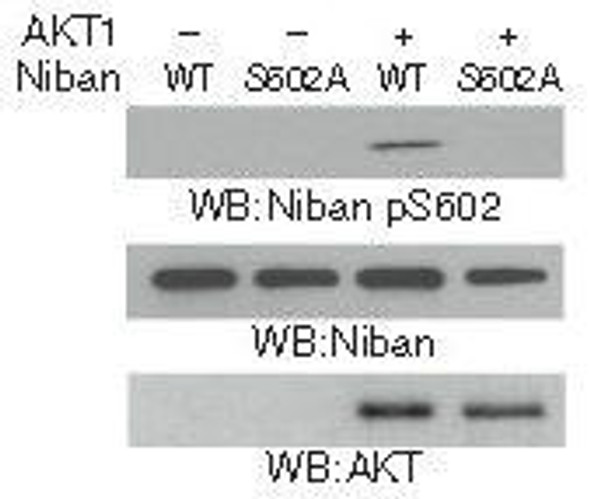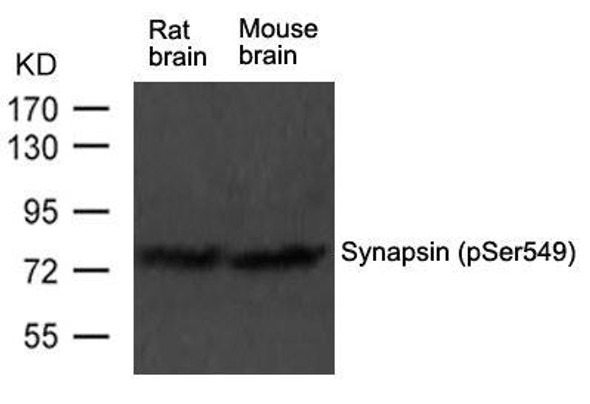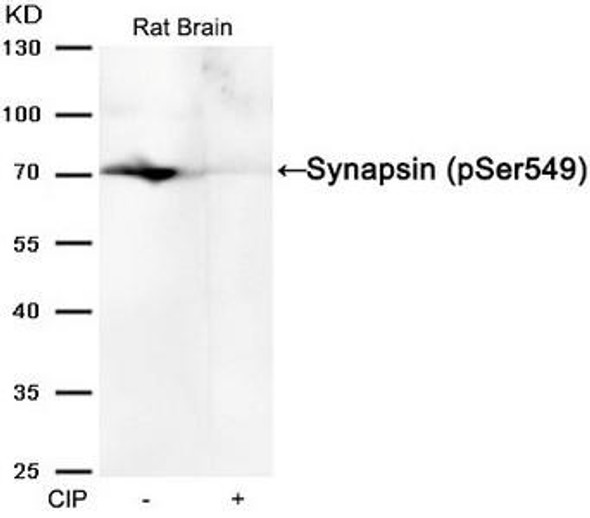Phospho-PAK7/PAK6 (S602/S560) Antibody (PACO04797)
- SKU:
- PACO04797
- Product Type:
- Antibody
- Reactivity:
- Human
- Mouse
- Host Species:
- Rabbit
- Isotype:
- IgG
- Applications:
- ELISA
- WB
- Antibody Type:
- Polyclonal Antibody
- Conjugation:
- Unconjugated
Description
Phospho-PAK7/PAK6 (S602/S560) Antibody (PACO04797)
The Phospho-PAK7 (pThr104) Polyclonal Antibody (PAC004797) is a valuable tool for researchers studying the PAK6 (S560/S602) phosphorylation site. This antibody, produced in rabbits, is highly specific for human samples and has been validated for use in Western blotting applications. By targeting the phosphorylated form of PAK7, this antibody allows for the detection and analysis of PAK6 phosphorylation in various cell types, making it ideal for investigations in cell signaling and cancer research.PAK6 is a serine/threonine kinase that plays a crucial role in regulating cell proliferation, survival, and migration. Phosphorylation of PAK6 at the S560/S602 sites is known to modulate its activity and function, making this antibody a valuable tool for researchers interested in understanding PAK6 signaling pathways.
By targeting these specific phosphorylation sites, researchers can gain insights into the role of PAK6 in various cellular processes and diseases, including cancer and neurodegenerative disorders.Overall, the Phospho-PAK7 (pThr104) Polyclonal Antibody is a reliable reagent for studying PAK6 phosphorylation and its impact on cell signaling pathways. Its high specificity and sensitivity make it an essential tool for researchers investigating the role of PAK6 in health and disease.
| Antibody Name: | Phospho-PAK7/PAK6 (S602/S560) Antibody |
| Antibody SKU: | PACO04797 |
| Size: | 50ug |
| Host Species: | Rabbit |
| Tested Applications: | ELISA, WB |
| Recommended Dilutions: | WB:1:500-1:2000 |
| Species Reactivity: | Human, Mouse |
| Immunogen: | synthesized peptide derived from human PAK5/6 around the phosphorylation site of S602/S560. |
| Form: | Liquid |
| Storage Buffer: | Liquid in PBS containing 50% glycerol, 0.5% BSA and 0.02% sodium azide. |
| Purification Method: | The antibody was affinity-purified from rabbit antiserum by affinity-chromatography using epitope-specific immunogen. |
| Clonality: | Polyclonal |
| Isotype: | IgG |
| Conjugate: | Non-conjugated |
| Synonyms: | PAK7; KIAA1264; PAK5; Serine/threonine-protein kinase PAK 7; p21-activated kinase 5; PAK-5; p21-activated kinase 7; PAK-7; PAK6; PAK5; Serine/threonine-protein kinase PAK 6; PAK-5; p21-activated kinase 6; PAK-6 |
| UniProt Protein Function: | PAK5: a protein kinase of the STE20 family. Predominantly expressed in brain. Capable of promoting neurite outgrowth, and thus may play a role in neurite development. Associated with microtubule networks and induces microtubule stabilization. Its subcellular localization is tightly regulated during cell cycle progression. |
| UniProt Protein Details: | Protein type:EC 2.7.11.1; Protein kinase, STE; Kinase, protein; Protein kinase, Ser/Thr (non-receptor); STE group; STE20 family; PAKB subfamily Chromosomal Location of Human Ortholog: 20p12 Cellular Component: mitochondrion; cytoplasm; nucleus Molecular Function:ATP binding; receptor signaling protein serine/threonine kinase activity Biological Process: cell proliferation; cell migration; apoptosis; cytoskeleton organization and biogenesis; locomotory behavior; learning; mitotic cell cycle; cell growth; signal transduction; protein amino acid phosphorylation; memory |
| NCBI Summary: | The protein encoded by this gene is a member of the PAK family of Ser/Thr protein kinases. PAK family members are known to be effectors of Rac/Cdc42 GTPases, which have been implicated in the regulation of cytoskeletal dynamics, proliferation, and cell survival signaling. This kinase contains a CDC42/Rac1 interactive binding (CRIB) motif, and has been shown to bind CDC42 in the presence of GTP. This kinase is predominantly expressed in brain. It is capable of promoting neurite outgrowth, and thus may play a role in neurite development. This kinase is associated with microtubule networks and induces microtubule stabilization. The subcellular localization of this kinase is tightly regulated during cell cycle progression. Alternatively spliced transcript variants encoding the same protein have been described. [provided by RefSeq, Jul 2008] |
| UniProt Code: | Q9P286 |
| NCBI GenInfo Identifier: | 12585290 |
| NCBI Gene ID: | 57144 |
| NCBI Accession: | Q9P286.1 |
| UniProt Secondary Accession: | Q9P286,Q5W115, Q9BX09, Q9ULF6, A8K5T6, D3DW14, |
| UniProt Related Accession: | Q9P286 |
| Molecular Weight: | 719 |
| NCBI Full Name: | Serine/threonine-protein kinase PAK 7 |
| NCBI Synonym Full Names: | p21 protein (Cdc42/Rac)-activated kinase 7 |
| NCBI Official Symbol: | PAK7 |
| NCBI Official Synonym Symbols: | PAK5 |
| NCBI Protein Information: | serine/threonine-protein kinase PAK 7; PAK-5; PAK-7; protein kinase PAK5; p21-activated kinase 5; p21-activated kinase 7; p21CDKN1A-activated kinase 7; serine/threonine-protein kinase PAK7 |
| UniProt Protein Name: | Serine/threonine-protein kinase PAK 7 |
| UniProt Synonym Protein Names: | p21-activated kinase 5; PAK-5; p21-activated kinase 7; PAK-7 |
| UniProt Gene Name: | PAK7 |
| UniProt Entry Name: | PAK7_HUMAN |


